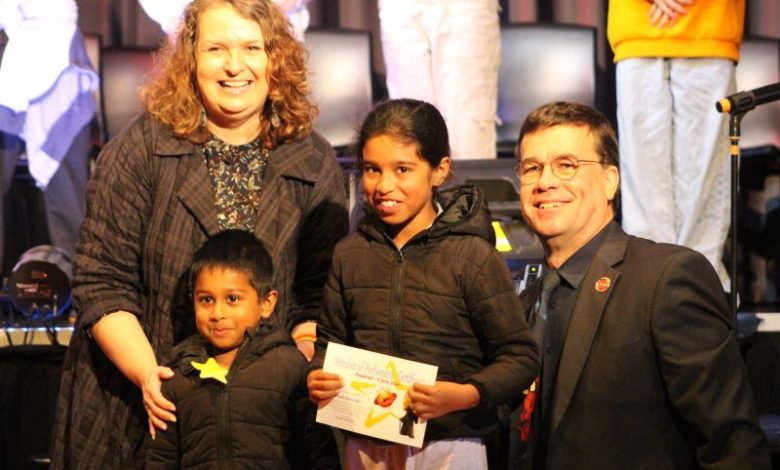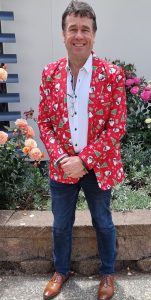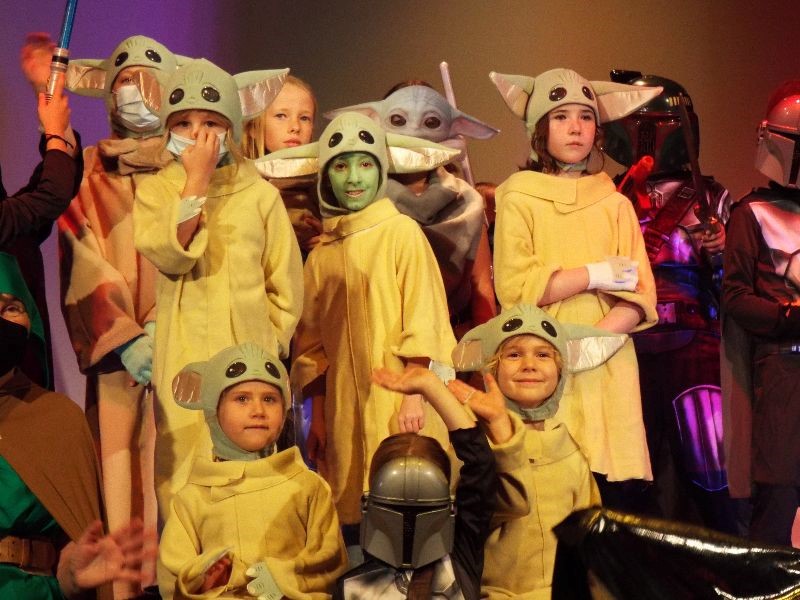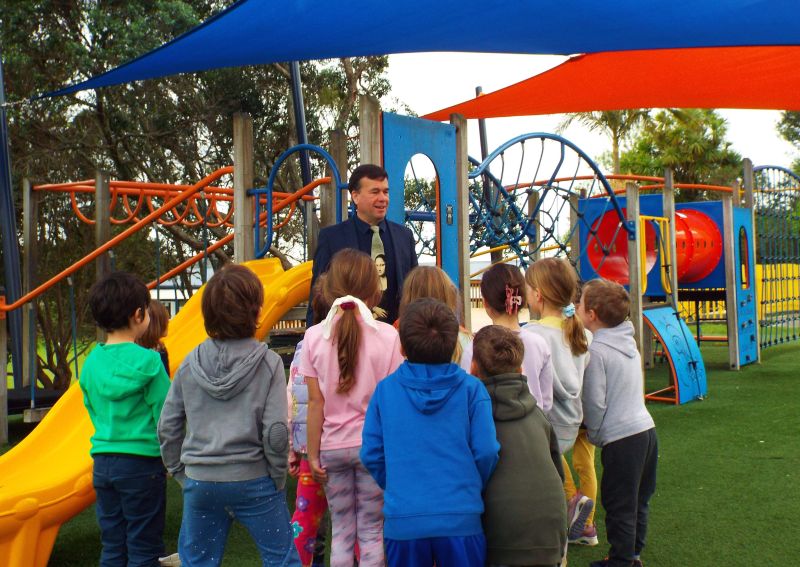
Pepeha
Ko ‘Yorkshire – West Riding’ te whenua
Ko te ‘Pennines’ te maunga
Ko ‘River Tyne me Waterloo Lake’ ōku awa me roto
Nō ‘Horsforth’ ahau
Ko ‘Leeds’ toku Iwi
Ko ‘Leeds United’ toku hapu
Ko ‘Malcolm Weatherill’ raua – Ko ‘Pat Storey’ ōku mātua
Ko ‘Fiona’ toku hoa wahine
Ko ‘Christopher’ raua ko ‘Stephanie’ ōku tamariki
Ko Martyn Weatherill toku ingoa
Noku te honore ki te tu
Hei tumuaki I te kura o Laingholm
Nō reira, Tēnā koutou, Tēnā Koutou, Tēnā Koutou, Katoa

As an educator and advocate, I am passionate about ensuring all students have every opportunity to reach their highest potential in whatever area that might be. My vision is that Aotearoa New Zealand’s public education system is one of the best in the world.
Read the latest print edition of School News HERE
To me, that means championing quality public education that is locally available and fully funded by the state, ensuring that every child has the right to a free, accessible, and excellent education.
I am passionate about promoting quality public education that is Te Tiriti based, equitable, inclusive and recognises diversity, including neurodiversity.
The power of difference
Sometimes systems and organisations are well served by embracing those that think differently. In the words of Rob Siltanen, from his time at Apple:
“Here’s to the crazy ones. The misfits. The rebels. The troublemakers. The round pegs in the square holes. The ones who see things differently. They’re not fond of rules. And they have no respect for the status quo. You can quote them, disagree with them, glorify, or vilify them. About the only thing you can’t do is ignore them. Because they change things. They push the human race forward. And while some may see them as the crazy ones, we see genius. Because the people who are crazy enough to think they can change the world, are the ones who do.”
I have absolutely no problem being viewed as one of the ‘crazy ones’. While I might not be able to change the world (yet), I believe I can make a positive difference for ākonga in Aotearoa New Zealand.
For years I have advocated for additional staffing in primary schools, for additional resourcing of primary schools, particularly around neurodiverse people.
I am neurodivergent myself, and in a lot of the kids that I see struggling in my school, I recognise the traits I see in myself. I was fortunate I had the support going through schooling to be able to come out the other side.
But currently, our system is failing these students, and it’s not the teachers that are failing them. It’s not the work within the schools. It’s the fact that we simply do not have the resource.
Unmet needs
Neurodiverse students need a bespoke, custom designed education plan and achievement plan – because neurodivergent students can achieve. The problem is that we’ve got a one-size-fits-all solution to pretty much everything in education, and unless you fit that mould, you miss out. To me, that’s unacceptable.
We need to advocate for resourcing for our neurodiverse children and children that need additional learning support. Once we do that, we will be able to say New Zealand has a quality public education system that is world leading. But up until we get to that point, we’re going to struggle with an achievement gap.
Too much of the conversation in education is around achievement in reading, writing, and maths. Don’t get me wrong, they are important, but we need to put them into context. Reading, writing and maths are tools that the student uses to do something else with – that’s the critical thing.
We liken it to hiring a builder to build your house. You can choose to hire the person that knows how to swing a hammer or use a saw, but you’re more likely to hire the person that has the creative vision for the house you want to have.
It’s not about the ability to use a tool, it’s the ability to be able to creatively do something with those skills. For a lot of our neurodiverse students, they need to understand the why. What am I going to do with these skills? Where are they going to fit in my life? You need to engage them in the process. Simply saying to them ‘you will do an hour of maths every day and you will be good at it’ doesn’t work unless they can see how they’re going to use those skills.

That means STEM is huge for these children, but so are subjects like music and the performing arts. Putting those opportunities in front of children are what will engage kids with learning. That’s where you bring up reading, writing and maths because they will see they need to be able to do those basics to engage with the thing they’re passionate about.
One example from early in my teaching career is one student who was defined as needing support in reading. When I talked to him, he told me about a video game that he was keen on playing. I knew this video game, and because it was a long time ago — before graphics got quite good — there was a lot of text in it. And he had to be reading this text, because he was engaged with the game. He wasn’t the slightest bit interested in reading about greedy cat. He was really interested in reading about Carmen San Diego. That’s dated me as a classroom teacher horribly, but the example still applies – when kids are engaged in their learning, they will learn.
When kids are engaged with their learning they’ll remember it as well. You talk to kids, and they remember school camps, they remember school productions, they remember performing on stage and raft races. None of them ever remember their maths lessons. It’s not about the tools, it’s about what you do with those tools — that’s what makes a difference.
Doing things differently
I think differently, and we do things differently at Laingholm Primary School.
Laingholm is nestled in the lush greenery of the Waitākere Ranges. It’s known for its stunning natural landscapes, tranquil atmosphere and a strong sense of community. The local school is a highlight, perched atop a ridge with a commanding view down the valley. On clear days, the vista stretches out to reveal a tapestry of green, while on foggy mornings the school sits high above the mist, creating a magical, almost otherworldly scene.
The beauty of Laingholm is intertwined with the warmth of its community. It’s a place where the simple pleasures of rural life are cherished, and the stunning surroundings provide a constant source of inspiration and tranquillity.
When I got here, I looked at the students in front of me, and I saw they needed an outlet for their creativity. So, I’ve now become a huge advocate for a performing arts programme. We have school bands, we have choirs, we have kapa haka and we have school productions that are second to none.
You look at some kids performing on stage and think: I never saw that coming. The kids will practise in a classroom, but then you put them on stage, you put the lights on, you put the sound effects in — you wrap around them all of the technology that stage performances have — and you can see their self-esteem and confidence growing. It’s an amazing experience.

One of the signature practices at our school is we know every kid, and our leadership team will sit down and discuss what we know about a particular child without reference to any documents. That relationship is crucial to the teaching process. That is how we engage the students and know what interests them.
There are 2500 schools in New Zealand, and every one of them is different. My school is up the road from another school that’s much larger. We do things differently from each other but we both do it really well. We’re quite different because we meet the needs of the students in front of us.
One-size-fits-all might be a cheap solution, but one size never fits all because every school has children with completely different needs, and the education system must meet all those needs.
During COVID, we had an example of a high trust model because the Ministry had to trust principals, the people on the ground in their communities to do the right thing for their communities. And by and large it worked brilliantly. The Ministry did what it does best, putting resourcing out and letting principals do what they do. High trust can work, and we need to move back to that.
Principals aren’t just leaders of their schools, in many cases they’re leaders of their community. Tumuaki Māori are often cultural leaders within their communities, for example.
The need for collectivism and the common good
I feel that now, more than ever, we also need to address the moral challenge that Jonathan Sacks calls “one of the biggest challenges facing democratic freedom”. We live in one of the most individualistic times in human history. Schools, and the education system in general, have an incredibly important role to play in shifting the focus back to a commitment to collective responsibility and the common good. In Sacks’ words “to strengthen civil society, restore morals to the market, and to accept responsibility for the future of the planet”.
We need to value the society, and we need to value the collective. If only one person succeeds, we have failed.









